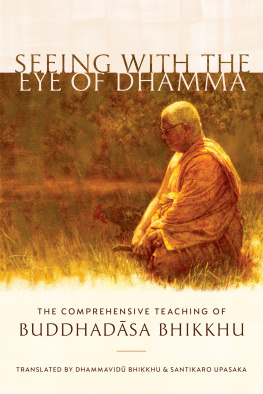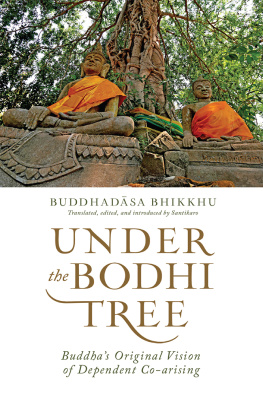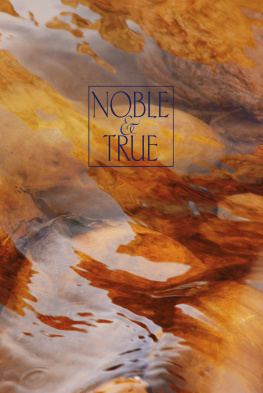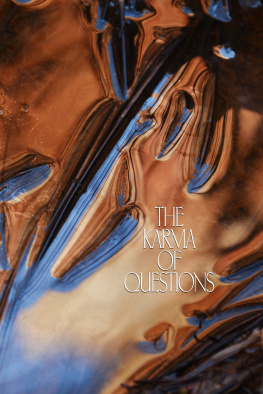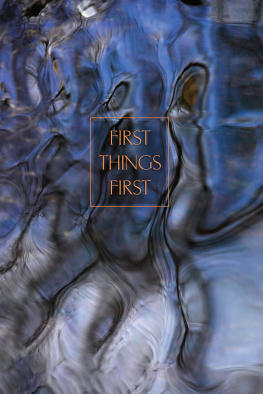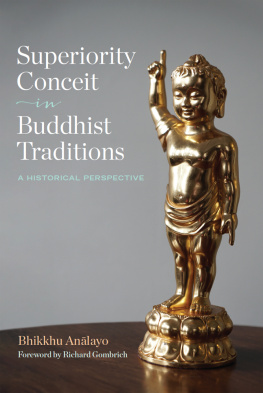CONTRIBUTIONS AND ACKNOWLEDGMENTS
Originally I was reluctant to take on this project. The original translation was by a friend, with whom there inevitably would be differences concerning the many thousands of choices that go into translating, editing, and publishing. I had a series of long conversations with colleagues at the Buddhadsa Indapao Archives (BIA)which manages Buddhadsa Bhikkhu publications on behalf of Suan Mokkh and brokered this projectand with Shambhala Publications, which wanted to publish a major work by Ajahn Buddhadsa. Eventually I realized that I could take this on only if I had complete freedom to shape, edit, and retranslate as I saw best for meeting our main objectives: conveying Ajahn Buddhadsas Dhamma faithfully and accurately in accessible language for non-Thai readers of English. With Ven. Dhammavid having started the Dhamma ball rolling, and with the encouragement of BIA, I agreed to take on what became a deeply meaningful personal journey.
To start, I was brought in as senior editor, which entails supervising translations on behalf of BIA and Suan Mokkh. By the end, however, I have done much more than supervise. I retranslated many sentences and paragraphs, not just occasional words and phrases, and I translated passages that werent in the original translation. I worked with Shambhala and BIA editors to rearrange the lecture material into a publishable book. Therefore, the title of cotranslator was added to senior editor. These roles are rooted in thirty-five years of study under Tan Ajahn Buddhadsa Bhikkhu, practicing accordingly, and learning the blessings of Dhamma, however Dhamma presents in my life, which have been varied and provocative.
Pondering the phrases, sentences, paragraphs, and structure of the Thai lectures and the original translation has been a wonderful Dhamma journey. As the themes of this little Dhamma book came together in my understanding, their meaning became realthat is, not merely words and ideas. Tracing Ajahn Buddhadsas development of these themes, and how he wove them together, built and echoed in me. Whenever hardships arose, all connected with me and mine, this work constantly drew my attention to profound Dhamma teachings that fostered recognizing and relaxing such me and mine.
Time constraints played a role too. I am slow in such work, prone to nitpicking and obsession. Inspired by this unfolding of Dhamma, with Covid-19 in the air and travel put on hold, Ive been able to sustain attention on the project through to its completion in 2021. Thus the themes of Seeing with the Eye of Dhamma have been a major support during the isolation brought on by the pandemic and have informed my online teaching. This impetus for sustained Dhamma contemplation has been a powerful, most-rewarding gift.
I am immensely grateful to those who invited me into this project. To Ajahn Buddhadsa for this teaching as well as decades of guidance. To my Thai aunts and uncles who transcribed and published the lectures. To Ven. Dhammavid for his interest in the lectures and the work of his original translation. To the Buddhadsa Indapao Archives in Bangkok for taking on the project and bringing me into it; in particular to Dr. Bunchar Pongpanich for his connections and support, and to Kittisak Rungrueangwatthanachai, Cindy Stewart, and Sante Vichitbandha for important contributions. To Nikko Odiseos and Shambhala Publications for their flexibility regarding Thai concerns and for facilitating publication. To Matt Zepelin and the editorial team, who have been wonderful companions in shaping the manuscript. To Franois Paco Merigoux for countless felicities, meticulous reading, and delicate management.
Finally, following Ajahn Buddhadsas example, I am grateful for the opportunity to serve the Buddha, Dhamma, and Sangha.
The translators, editors, sponsors, and publisher hope you will enjoy Ajahn Buddhadsas distinctive style and voice and his unwavering focus on the essentials of spiritual practice. May readers embark on this path wholeheartedly and experience profound change.
SANTIKARO UPASAKA
Kevala Retreat
April 2021
OTHER BOOKS BY
BUDDHADSA BHIKKHU
Buddha-Dhamma for Inquiring Minds
Christ-Dhamma, Buddha-Dhamma
Dhammic Socialism
Disadhamma: Mankinds Pathway Dhamma First Ten Years of Suan Mokkh Handbook for Mankind
Heartwood of the Bodhi Tree: The Buddhas Teachings on Voidness Keys to Natural Truth Me and Mine
Mindfulness with Breathing: A Manual for Serious Beginners
Single Bowl of Sauce: Teachings beyond Good and Evil
Under the Bodhi Tree: Buddhas Original Vision of Dependent Co-arising
EBOOKS
An expanding list of free distribution ebooks, poems, and articles can be found at www.suanmokkh.org. Extensive audio offerings in translation are available on SoundCloud.
Sign up to receive news and special offers from Shambhala Publications.

Or visit us online to sign up at shambhala.com/eshambhala.
LECTURE DATES AND CHAPTER CORRESPONDENCE
Lecture 1 | 1st January 2526 (1983) | Introduction and Chapter 1 |
Lecture 2 | 8th January 2526 (1983) | Chapters 2 and 3 |
Lecture 3 | 15th January 2526 (1983) | Chapter 4 |
Lecture 4 | 22nd January 2526 (1983) | Chapter 5 |
Lecture 5 | 29th January 2526 (1983) | Chapter 6 |
Lecture 6 | 5th February 2526 (1983) | Chapter 7 |
Lecture 7 | 12th February 2526 (1983) | Chapter 8 |
Lecture 8 | 19th February 2526 (1983) | Chapter 9 |
Lecture 9 | 5th March 2526 (1983) | Chapters 10 and 11 |
Lecture 10 | 12th March 2526 (1983) | Chapter 12 |
Lecture 11 | 19th March 2526 (1983) | Chapter 13 |
Lecture 12 | 26th March 2526 (1983) | Chapter 14 |
THE ORDINARY CONDITIONS OF HUMAN LIFE

Now well begin by looking at the basic nature of ordinary human life and the issues that we ought to be aware of. Ill endeavor to speak in terms that will be easy to grasp and study.
Causes and Conditions Shape Lifes Many Forms
The very first topic is that this life can take many forms depending on the prevalent causes and conditions. Life as each of us normally lives it, as already exists and is known by us, has causes and conditions that lead to our particular manners of living. Other ways of living can come about in the same way. For instance, a life that is worse than ours can easily be had by anyone who behaves accordingly, just as our way of living comes easily to us. A more elevated way of life, which improves and excels until reaching that of arahant, also can be cultivated. The arahant form of life comes about easily for those who are on track to be arahant. We have the capacity to choose among the causes and conditions that will create and shape the life we aspire to.

